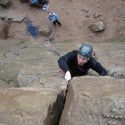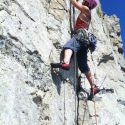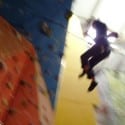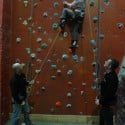If you climb on a single 60m rope and you wish to abseil back down the route you have just climbed, you can only abseil in 30m pitches in order to recover your rope. If, however, you have been using double ropes of 60m, then by tying the two ends together you can abseil 60m […]
Part 12: Using fixed gear
Placing gear on lead can seem daunting, but if you start off with easier climbs and build up you will make natural progress. One of the key elements of this is to feel solid and comfortable whilst selecting and placing gear wherever you are on the rock face and whenever opportunities present themselves. Be aware […]
Part 11 – Learning to Trad Lead Climb: Gear & Building Belays
Once you have been tempted outdoors and begin leading sport routes, you soon realise that this type of climbing is quite restrictive. You can only climb where there are routes with bolts. In order to develop your skills and experience more adventurous climbs on mountain crags and sea cliffs, you will have to learn to […]
Part 10 – Learning to Sport Lead Climb: Belaying & Taking Lead Falls, The Lower Off
Taking a fall can be very intimidating, and it is best to practice on a steep, overhanging wall, when 5 or 6 clips up, where you can just fall into space. Often when a climber gets into difficulty, she either down climbs and sits on the rope, or asks for a tight rope, then drops off. […]
Part 9 – Learning to Sport Lead Climb: Mock Leading, Leading & Lead Belaying
The safest way to learn to lead climb is to mock lead. Mock leading is best done with 3 people; one to lead climb, tied into both a lead rope and a top rope, one to lead belay and one to top rope belay – keeping the lead climber safe as he/she practises clipping without […]




